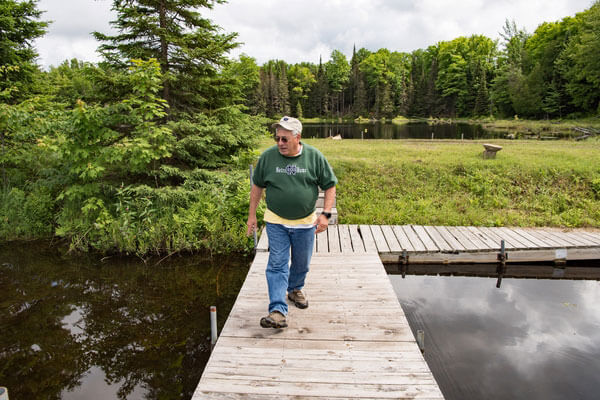
Current brine shrimp egg harvesting practices could lead to economic and environmental concerns

Brine shrimp are the half-inch-long crustacean colloquially known as sea monkeys and are one of the few organisms that can survive in Utah’s Great Salt Lake (GSL). More than a low-maintenance pet, brine shrimp produce eggs, or cysts, that can be dormant, shipped around the world, hatched, and used as nutritious fish food in aquaculture. That seafood is then likely to end up at your local grocery store or favorite restaurant. Each year the GSL supplies up to 45 percent of the world’s brine shrimp cyst needs and to collect them, harvesters skim the floating cysts off the top of the lake while sinking cysts remain.
New research completed at the University of Notre Dame’s Environmental Research Center (UNDERC) – West indicates that as sinking brine shrimp cysts remain while many floating cysts are removed, the brine shrimp population is shifting to contain more sinking cysts. Gary Belovsky, professor of biology and Gillen Director of UNDERC, and Shayna Sura, 2014 Notre Dame graduate, found that this occurs from commercial harvesting practices placing evolutionary pressure on the lake’s brine shrimp population.
“Our results indicate a clear relationship between cyst buoyancy of parent shrimp and their offspring,” said Belovsky. “This is an important finding in the analysis of selective harvesting, as it shows how commercial behaviors are forcing evolutionary responses and shifts in an organism’s physical characteristics.”
 Gary Belovsky at UNDERC-East
Gary Belovsky at UNDERC-East
The results from the Notre Dame researchers showed that the current harvesting techniques are inducing genetic changes in the lake, leading to fewer floating cysts. The research also presented a connection between cyst buoyancy, energy content that the cysts use for survival, and hatchling mortality. This means that by targeting brine shrimp eggs that float, harvesters may also be unintentionally decreasing the survival of brine shrimp in the lake.
Even after evaluating environmental changes, such as increased water temperature and a decrease in food availability for the brine shrimp, Belovsky and Sura found that commercial harvesting’s impact is much greater. Currently, the brine shrimp cysts collected from the GSL contribute annually about $57 million to Utah’s economy. Additionally, five million birds - more than a third of the total water birds west of the Mississippi - utilize the GSL each year. Many of these birds feed on brine shrimp.
“The population shift to decreased cyst buoyancy has negative economic and environmental implications,” said Belovsky. “This evolutionary response could lead to future reduced yields in the brine shrimp cyst industry as well as reduce the brine shrimp population’s ability to recover from harvesting and to provide food for birds.”
The study conducted at UNDERC-West was published in Ecological Applications and can be found here. UNDERC aims to promote environmental research and education needs of the scientific community through two programs: UNDERC-East on the Upper Peninsula of Michigan and UNDERC-West in Montana. To learn more please visit underc.nd.edu.
Contact:
Gary Belovsky / Gillen Director of UNDERC
University of Notre Dame Environmental Research Center / University of Notre Dame
Belovsky.1@nd.edu / 574.631.0172
underc.nd.edu / @NDFieldEcology
About Notre Dame Research:
The University of Notre Dame is a private research and teaching university inspired by its Catholic mission. Located in South Bend, Indiana, its researchers are advancing human understanding through research, scholarship, education, and creative endeavor in order to be a repository for knowledge and a powerful means for doing good in the world. For more information, please see research.nd.edu or @UNDResearch.